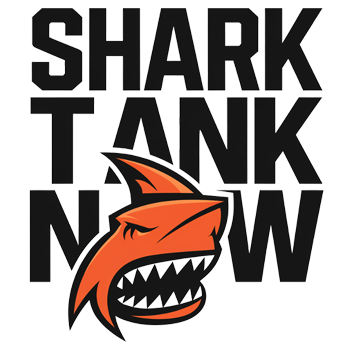The 180 Cup was a product that sparked excitement and curiosity when it appeared on Shark Tank. I was fascinated by its potential to revolutionize social gatherings. A simple yet brilliant idea, the 180 Cup was a dual-function party cup: a 16-ounce beverage holder with a 1.5-ounce shot glass cleverly built into its base. Its purpose? To simplify parties by eliminating the need for separate drinkware. But as much as the concept captured attention, the journey of 180 Cup—from its pitch on Shark Tank to its eventual dissolution—offers invaluable lessons for entrepreneurs. Let me take you through its story.
Detailed Data-Rich Table
| Category | Details |
|---|---|
| Product Name | 180 Cup |
| Founders | Solomon Fallas |
| Season & Episode | Season 5, Episode 7 |
| Ask (Investment & Equity) | $300,000 for 15% equity |
| Final Deal | $300,000 for 25% equity |
| Shark(s) Involved | Daymond John |
| Memorable Episode Moments | Daymond John withdrew his initial offer when Fallas hesitated, leading to tense negotiations before finalizing the deal. |
| Current Net Worth | Not applicable; company is no longer active. |
| Current Business Status | Dissolved as of early 2016 |
| Revenue Since Shark Tank | Approximately $4.9 million in sales before closure |
| Social Media Presence | Accounts became inactive around January 2016; website is no longer operational. |
| Key Achievements | Expanded product line to include red flasks, mini red cup shooters, and beer pong sets; featured in major retailers like Walmart and Staples. |
The Birth of 180 Cup
The brain behind the 180 Cup was Solomon Fallas, a young entrepreneur with a knack for spotting gaps in the market. Fallas’s background is worth noting: though he wasn’t an inventor by trade, his understanding of consumer behavior and marketing made him stand out. He realized that traditional red party cups were iconic, but they weren’t always practical. With the 180 Cup, he aimed to make parties more convenient by integrating a shot glass into the design, creating a product that served dual purposes.
Stepping Into the Tank
Fallas pitched the 180 Cup during Season 5, Episode 7 of Shark Tank. Right from the start, he exuded confidence and charm—qualities that are crucial for captivating both the Sharks and the audience. He entered the tank seeking a $300,000 investment for a 15% equity stake, valuing his company at $2 million.
The Pitch
Fallas’s presentation was impressive. He highlighted the uniqueness of the 180 Cup, its potential to replace traditional red cups at social events, and the ingenious design that incorporated a shot glass into the base. His pitch wasn’t just about the product; it was about the culture it could foster.
To back his claims, Fallas presented solid sales numbers. In under six months, he had sold over 5 million units, generating $385,000 in revenue. His marketing strategy was as innovative as the product itself: he employed college students to spread the word on platforms like Craigslist and social media, creating a buzz that led to a 92% re-order rate within the first month.
The Sharks were intrigued by the combination of creativity, sales success, and marketing ingenuity. Fallas’s pitch was not without its drama, though, and that brings us to the next chapter.
The Deal: A Rollercoaster Negotiation
Daymond John was quick to make an offer. He proposed $300,000 for 20% equity but demanded an immediate decision. When Fallas hesitated, John withdrew his offer, creating a palpable tension in the room. As the other Sharks expressed doubts and declined to invest, John re-entered the negotiations. Eventually, they struck a deal: $300,000 for 25% equity.
This moment was a reminder of the high-stakes nature of Shark Tank negotiations. The episode’s dramatic arc highlighted the importance of decisiveness and the need to carefully balance ambition with flexibility.
The Aftermath: From Boom to Bust
After securing a deal with Daymond John, the 180 Cup experienced a significant boost in visibility and sales. It was featured in major retailers like Walmart and Staples, and Fallas expanded the product line to include items like red flasks, mini red cup shooters, and beer pong sets. At one point, there were even plans to develop an environmentally friendly glass version of the 180 Cup.
Revenue Growth
Post-Shark Tank, the 180 Cup reportedly achieved approximately $4.9 million in sales. For a time, it seemed like the brand was on a steady upward trajectory. The product’s convenience and novelty resonated with its target market, making it a staple at parties and events.
Challenges Arise
Despite its initial success, the 180 Cup faced several challenges. Disagreements between Fallas and John about the direction of the company strained their partnership. Additionally, the product’s reliance on a single-use plastic design faced criticism in an increasingly eco-conscious market. Efforts to pivot to more sustainable materials were made but didn’t gain enough traction.
The company also turned down an endorsement deal with rapper Lil Jon—a move that could have expanded its cultural relevance and market reach. In hindsight, this might have been a missed opportunity to solidify the brand’s identity and appeal.
The End of 180 Cup
By early 2016, the 180 Cup had ceased operations. Its website was shut down, and its social media accounts became inactive. While the reasons for the company’s closure weren’t explicitly detailed, it’s clear that internal disagreements and market challenges played significant roles.
Lessons for Entrepreneurs
The story of the 180 Cup offers several key takeaways for aspiring entrepreneurs:
- Innovative Ideas Need Long-Term Strategy
- While the 180 Cup was a novel product, its sustainability and scalability were not fully addressed. Entrepreneurs should think beyond the initial buzz and plan for long-term market relevance.
- The Importance of Partnerships
- The disagreements between Fallas and John highlight how crucial it is to align visions with business partners. Clear communication and shared goals are vital for a successful collaboration.
- Seizing Opportunities Matters
- The decision to decline an endorsement deal with Lil Jon was a pivotal moment. Strategic partnerships can provide the cultural cachet needed to elevate a brand.
- Adaptability is Key
- With growing environmental concerns, the 180 Cup could have thrived by pivoting to eco-friendly materials. Staying attuned to market trends is essential for longevity.
Current Status
As of now, the 180 Cup is no longer in operation. Its legacy, however, lives on as a case study in entrepreneurial innovation and the complexities of business growth. Despite its closure, the product’s initial success demonstrates the power of creativity and clever marketing.
Final Thoughts
Reflecting on the 180 Cup’s journey, I’m reminded of how thrilling and unpredictable the entrepreneurial world can be. The product had all the makings of a success story: a unique idea, strong sales, and the backing of a Shark. Yet, internal challenges and external pressures led to its downfall.
For entrepreneurs, the story of the 180 Cup is both cautionary and inspiring. It’s a reminder that while innovation can open doors, success requires meticulous planning, strong partnerships, and adaptability. Who knows? Maybe one day, someone will take inspiration from the 180 Cup and create the next big thing in partyware. Until then, it remains a fascinating chapter in the annals of Shark Tank history.

